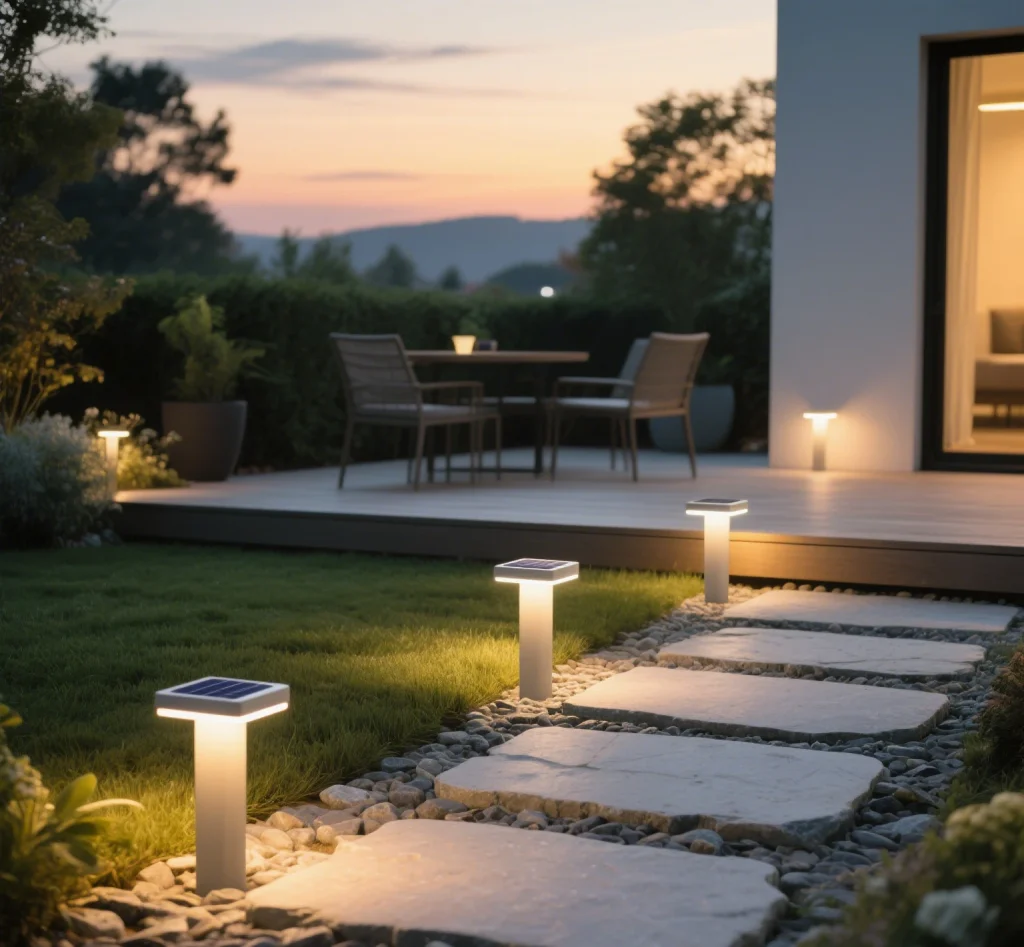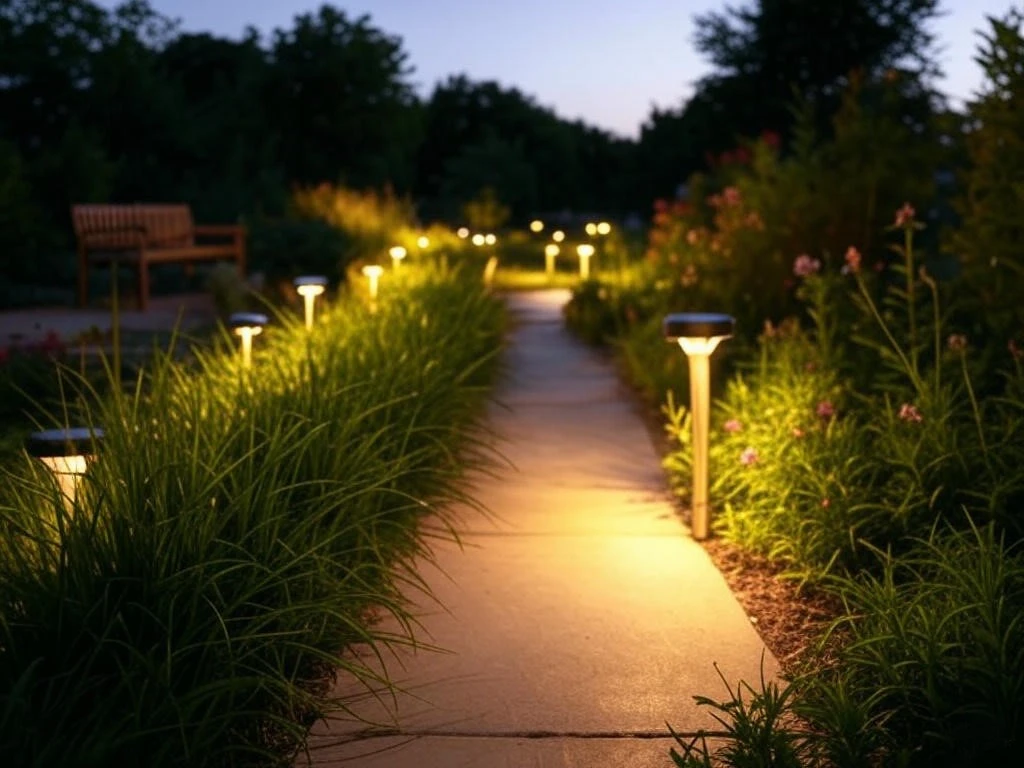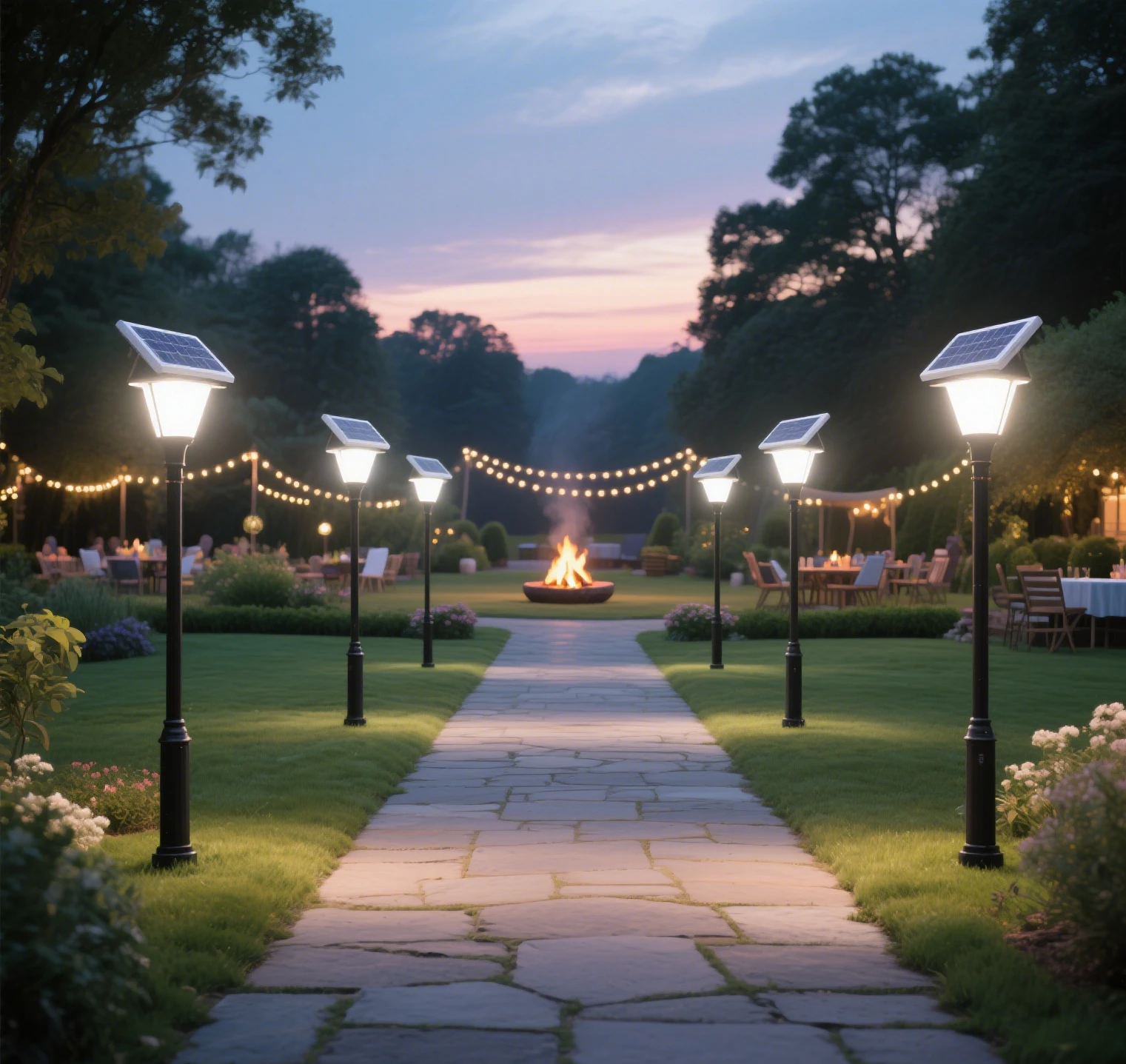Solar powered lights are celebrated for their energy-efficient lighting and eco-friendly design, harnessing sunlight to illuminate outdoor spaces. However, a common concern arises: How can you power solar lights when sunlight is scarce, such as during cloudy days, winter months, or in shaded areas? While solar panels rely primarily on sunlight, there are methods to ensure solar powered lamps function effectively without direct sun exposure. This article explores alternative power sources, optimization strategies, and innovative technologies to keep solar garden lights and solar street lights operational, offering a comprehensive guide for sustainable illumination.

Understanding How Solar Lights Work
To explore how to power solar lights without sun, it’s essential to understand their mechanics. A solar lighting system comprises a solar panel, rechargeable battery, LED lights, and often a light sensor or motion sensor for automation. The solar panel, made of photovoltaic cells, converts sunlight into electricity via the photovoltaic effect. This electricity charges the rechargeable battery, which powers the LED lights at night. The system’s efficiency depends on solar panel efficiency and the amount of solar radiation received.
In ideal conditions, solar panels receive direct sunlight, producing maximum energy—up to 1000 watts per square meter. However, in low-light scenarios, such as cloudy days or shaded areas, energy production drops. Fortunately, solar powered lights can still function using alternative methods and strategic optimizations, ensuring reliable sustainable outdoor lighting.
Can Solar Lights Charge Without Direct Sunlight?
Solar panels don’t require direct sunlight to generate electricity. They can capture diffuse light—sunlight scattered by clouds, fog, or reflections—allowing solar powered lamps to charge even on overcast days. While efficiency may drop to 10-30% of optimal levels under heavy clouds, high-quality monocrystalline solar panels perform better in low-light conditions. For instance, solar garden lights in cloudy regions can still charge, albeit more slowly, ensuring functionality during extended low-sun periods.
Artificial light sources, such as incandescent bulbs or streetlights, can also charge solar panels, but their intensity is significantly lower than sunlight. For example, a 100W incandescent bulb might take 10-20 hours to provide a charge equivalent to one hour of sunlight, making it impractical for most solar lighting systems. Thus, alternative strategies are needed to power solar lights without relying solely on the sun.
Alternative Methods to Power Solar Lights
1. Using Artificial Light Sources
While not ideal, artificial lights like incandescent bulbs, fluorescent lamps, or high-intensity LED floodlights can charge solar panels in a pinch. To maximize effectiveness, position the solar panel close to a bright artificial light source with a spectrum similar to sunlight. For example, solar pathway lights placed near a powerful outdoor floodlight may capture some energy, though charging times will be significantly longer. This method is best as a temporary solution for solar powered lights in heavily shaded or indoor settings.
2. External Battery Charging
In areas with minimal sunlight, you can charge the rechargeable battery externally using a compatible charger powered by grid electricity or another renewable source. Many solar powered lamps use standard battery types, such as lithium-ion or NiMH, which can be removed and charged indoors. This ensures LED lights remain operational during prolonged cloudy periods or in regions with limited solar exposure. Always verify compatibility with the manufacturer’s specifications to avoid damaging the battery.
3. Supplemental Power Sources
Connecting solar lighting systems to alternative power sources, such as small wind turbines or portable generators, can supplement energy needs. Hybrid systems combining solar panels with other renewable energy sources are increasingly popular for solar street lights in areas with inconsistent sunlight. These setups require additional equipment, such as charge controllers, to integrate power inputs safely, ensuring consistent performance for sustainable outdoor lighting.
4. Reflective Surfaces
Using mirrors or reflective materials to redirect ambient light onto solar panels can enhance charging in low-light conditions. For example, placing a mirror near solar garden lights in a shaded area can reflect diffuse light or artificial light, increasing solar radiation capture. This method is cost-effective and can improve solar panel efficiency without additional power sources.
Optimizing Solar Lights for Low-Sun Conditions
To ensure solar powered lights function effectively without direct sunlight, consider these optimization strategies:
- Choose High-Efficiency Panels: Monocrystalline solar panels offer superior solar panel efficiency, capturing more diffuse light in cloudy or shaded conditions. They are ideal for solar pathway lights in regions with frequent overcast weather.
- Enhance Battery Capacity: A high-capacity rechargeable battery can store enough energy to power LED lights for multiple nights, compensating for reduced charging. For example, solar street lights with large batteries can operate for 5-7 days without sunlight.
- Use Efficient Lights: Select high-lumen LED lights (100-150 lm/W) to maximize brightness per watt, reducing energy demand and allowing solar panels to support longer operation in low-light conditions.
- Optimal Placement: Position solar panels in areas with maximum solar exposure, even if limited, such as clearings or rooftops. Avoid deep shade from trees or buildings to capture as much diffuse light as possible.
- Incorporate Advanced Technology: Use Maximum Power Point Tracking (MPPT) controllers or smart inverters to optimize energy harvest from solar panels, especially in low-light scenarios. Bifacial solar panels, which capture light on both sides, can also boost efficiency.
- Regular Maintenance: Clean solar panels to remove dust, dirt, or snow, as these reduce solar radiation absorption. Rainfall often helps, but manual cleaning with a soft cloth and water may be necessary in dry climates.
Performance in Challenging Conditions
Cloudy and Overcast Days
Cloudy skies reduce solar radiation, but solar powered lights can still charge using diffuse light. Monocrystalline solar panels and MPPT controllers improve performance, ensuring solar garden lights remain functional. Phenomena like cloud lensing, where high-altitude clouds amplify sunlight, can occasionally enhance charging.
Rain and Snow
Light rain allows solar panels to charge via diffuse light, and rainfall cleans panels, improving solar panel efficiency. Snow can block sunlight, but angled solar panels shed snow, and cold temperatures enhance photovoltaic cell performance, benefiting solar pathway lights in winter.
Shaded Areas
Shade significantly reduces solar exposure, but bifacial solar panels and microinverters mitigate this by capturing reflected light and optimizing cell output. Repositioning solar powered lamps to less shaded areas can also improve performance.

Benefits of Solar Powered Lights
Solar powered lights offer numerous advantages, making them ideal for eco-friendly lighting. They eliminate grid dependency, reducing energy costs and environmental impact. Their energy-efficient lighting design, often paired with motion sensors, minimizes waste. Easy installation without wiring makes them perfect for off-grid lighting in remote areas or as solar garden lights in residential settings. Their adaptability to low-light conditions, with the right strategies, ensures reliable performance, aligning with renewable energy goals.
Addressing Common Misconceptions
A common myth is that solar powered lights are ineffective without direct sunlight. While sunlight optimizes performance, diffuse light and alternative methods enable functionality in low-sun conditions. Another misconception is that solar panels cannot charge at all without sun. Technologies like monocrystalline solar panels and external charging options prove otherwise, making solar lighting systems versatile.
The Future of Solar Lighting
Advancements in solar lighting technology are enhancing the resilience of solar powered lights. Perovskite solar cells promise higher solar panel efficiency, while improved battery storage systems extend operational life. Smart inverters and MPPT controllers optimize energy use, enabling solar powered outdoor lights to function in challenging conditions. These innovations will make solar lights more accessible, supporting the global shift to renewable energy.
Conclusion
Powering solar lights without sun is achievable through alternative methods like artificial light, external battery charging, supplemental power sources, and reflective surfaces. Optimizing solar lighting systems with monocrystalline solar panels, high-capacity rechargeable batteries, and MPPT controllers ensures reliable performance in low-light conditions. As eco-friendly lighting solutions, solar powered lamps offer sustainability and cost savings, making them ideal for sustainable outdoor lighting. By implementing these strategies, users can keep solar garden lights and solar street lights shining brightly, even without direct sunlight, contributing to a greener future.


Leave a Reply